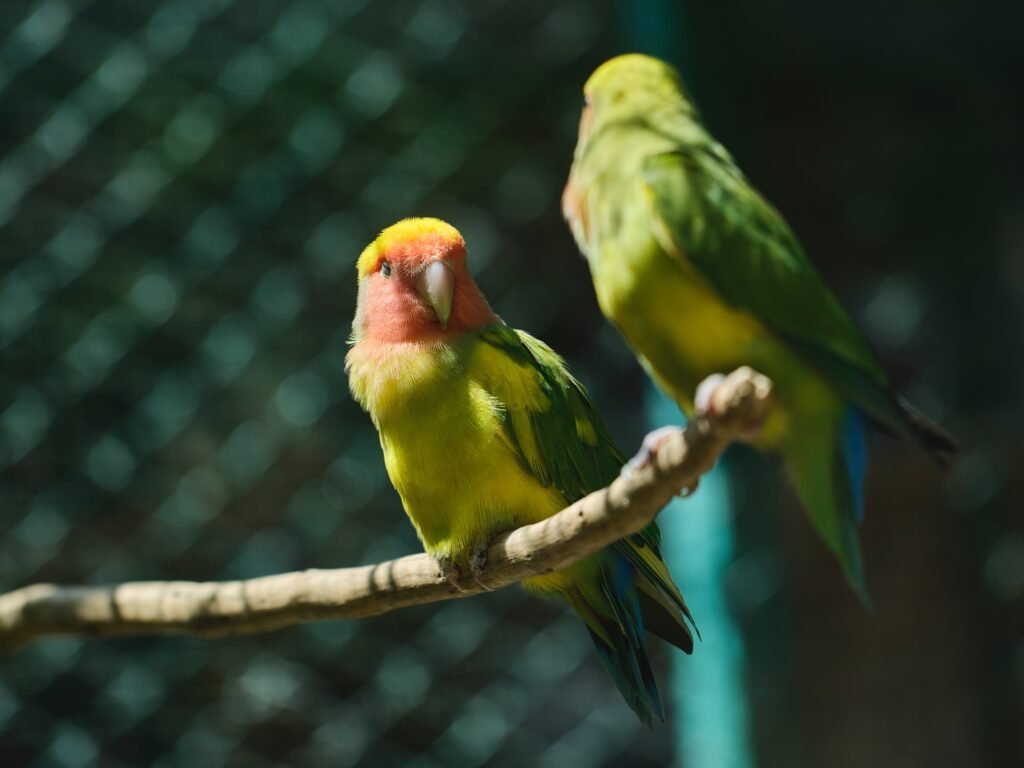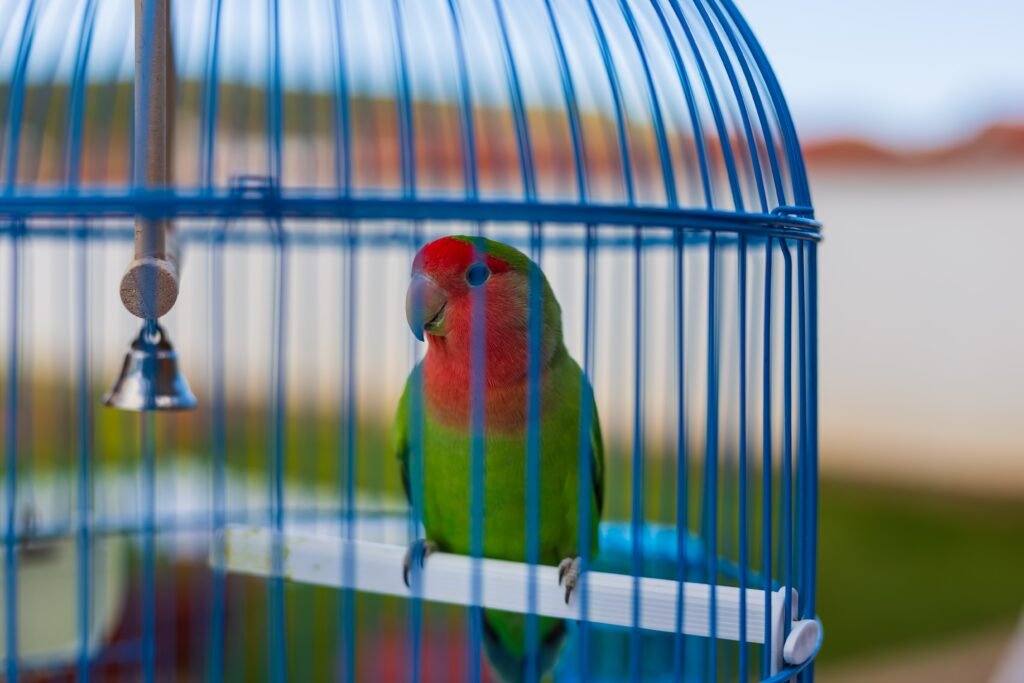Are you a bird enthusiast or simply someone who appreciates the beauty of nature? If so, you may be interested in attracting wild lovebirds to your backyard in Arizona. Known for their vibrant colors and melodious songs, lovebirds can bring joy and a touch of tropical charm to your outdoor space. In this article, we will explore various methods and tips to attract these lovely creatures to your Arizona garden.
Creating a Welcoming Habitat
To attract wild lovebirds, it is essential to provide them with a suitable habitat that meets their basic needs. Consider the following points when designing your garden:
- Native Plants: Incorporate native plants into your garden as they provide the ideal environment for lovebirds. Arizona offers a variety of native flora that lovebirds are naturally drawn to, such as saguaro cacti, ocotillo, and desert marigold. These plants not only provide food sources but also create natural perches and nesting spots.
- Saguaro cacti: Lovebirds are attracted to the nectar and fruits produced by saguaro cacti. These tall and iconic cacti can serve as natural feeding stations for lovebirds.
- Ocotillo: This unique desert plant produces bright red flowers that lovebirds are particularly fond of. By planting ocotillo in your garden, you can provide a visual treat for lovebirds.
- Desert marigold: Lovebirds enjoy the seeds produced by desert marigold. This vibrant yellow flower not only adds color to your garden but also serves as a food source for these birds.
- Water Source: Lovebirds need a reliable water source for drinking and bathing. Install a birdbath or a shallow water dish in your garden, ensuring that it is regularly cleaned and filled with fresh water. Placing it near dense shrubs or trees will provide lovebirds with a sense of security as they drink and bathe.
- Birdbath: Consider using a birdbath with a shallow basin to accommodate lovebirds. Place some small rocks or pebbles in the basin to provide perching spots for the birds while they drink or bathe.
- Water dish: If you prefer a more natural-looking water source, use a shallow dish or saucer filled with water. Make sure to change the water frequently to keep it clean and fresh.
- Provide Shelter: Lovebirds seek refuge in shrubs, trees, and other dense vegetation. Planting native bushes and trees that offer protection and shade will entice lovebirds to make your garden their home. Consider species like the ironwood tree, mesquite, or the palo verde tree.
- Ironwood tree: Lovebirds are attracted to the dense foliage of the ironwood tree, which provides ample shelter and shade. Planting this tree in your garden can create a safe haven for lovebirds.
- Mesquite: Mesquite trees offer both food and shelter for lovebirds. Their unique branching structure provides ideal perching spots for these birds.
- Palo verde tree: The palo verde tree produces beautiful yellow flowers and provides lovebirds with a shady retreat. Consider planting this tree to attract lovebirds to your garden.
- Avoid Chemicals: Minimize the use of pesticides, herbicides, and other chemicals in your garden. These substances can be harmful to lovebirds and the ecosystem as a whole. Instead, opt for natural pest control methods and organic gardening practices.
- Natural pest control: Encourage natural predators of garden pests, such as ladybugs, lacewings, and birds, by providing suitable habitats and food sources for them. These beneficial insects and birds can help keep pest populations in check without the need for harmful chemicals.
- Organic gardening: Use organic fertilizers and compost to nourish your plants. This will promote a healthy and balanced ecosystem that is attractive to lovebirds and other wildlife.
Food to Attract Lovebirds
Providing a variety of food options will greatly increase your chances of attracting wild lovebirds. Here are some food ideas that are sure to entice them:
- Seeds: Lovebirds have a particular fondness for seeds. Offer a mix of sunflower seeds, safflower seeds, millet, and nyjer seeds. Place these seeds in bird feeders or spread them across shallow trays or platforms.
- Sunflower seeds: Lovebirds are especially attracted to black oil sunflower seeds. These seeds are high in fat and provide essential nutrients for the birds.
- Safflower seeds: Safflower seeds are another favorite of lovebirds. These seeds have a thick shell, which makes them more challenging for larger birds to crack open, giving lovebirds an advantage.
- Millet: Lovebirds enjoy millet, which is a small grain-like seed. You can offer millet sprays or loose millet in bird feeders for them to enjoy.
- Nyjer seeds: Nyjer seeds, also known as thistle seeds, are a favorite of many small songbirds, including lovebirds. These tiny seeds are packed with energy and are best offered in specialized nyjer feeders with small feeding ports.
- Fruits and Berries: Lovebirds are also attracted to fresh fruits and berries. Offer slices of apples, pears, or grapes, as well as berries like strawberries and blueberries. Ensure that the fruits are fresh and free from any pesticides.
- Apples and pears: Lovebirds enjoy the sweetness and juiciness of apples and pears. Cut the fruits into small, bite-sized pieces and place them in feeding trays or feeders.
- Grapes: Lovebirds can easily peck at grapes placed on a tray or skewered onto a feeder. Make sure to remove any seeds before offering them to the birds.
- Strawberries and blueberries: These small fruits can be served whole or cut into smaller pieces. Lovebirds will relish the taste and texture of these berries.
- Native Plants: As mentioned earlier, planting native flora such as saguaro cacti and desert marigold not only provides shelter but also offers lovebirds a natural source of food. These plants produce fruits, nectar, and seeds that lovebirds enjoy.
- Saguaro cacti: In addition to nectar, saguaro cacti produce edible fruits that lovebirds feed on. These fruits are a valuable food source, especially during the dry seasons.
- Desert marigold: Lovebirds can consume the seeds produced by desert marigold. By planting this native plant, you can provide a sustainable and ongoing food supply for lovebirds.
- Sugar Water: Lovebirds have a sweet tooth, and providing them with a sugar water solution can be a treat. Mix one part sugar with four parts water, ensuring the solution is thoroughly dissolved. Fill a hummingbird feeder with the solution and hang it in your garden.
- Hummingbird feeder: Lovebirds are often attracted to hummingbird feeders because they contain sweet nectar. Make sure to clean and refill the feeder regularly to keep the solution fresh and appealing to the birds.
Creating Lovebird-Friendly Structures
In addition to providing a suitable habitat and food sources, you can attract lovebirds by incorporating specific structures into your garden:
- Nesting Boxes: Lovebirds are cavity nesters, meaning they nest in tree holes or other hollow spaces. Installing nesting boxes in your garden can provide them with safe and cozy nesting sites. Place the nesting boxes in trees or on secure poles at a height of around 6-10 feet.
- Nesting box design: Make sure the nesting boxes have an entrance hole that is the appropriate size for lovebirds, typically around 1.5 inches in diameter. The interior should be spacious enough for lovebirds to build their nests and raise their young.
- Perches: Lovebirds are highly acrobatic and enjoy hopping from one perch to another. Install natural-looking perches in various locations throughout your garden. These perches can be made from branches or logs, providing lovebirds with easy vantage points to observe their surroundings.
- Perch placement: Position the perches at different heights and angles to create a dynamic and engaging environment for lovebirds. Place them near food sources or near nesting boxes to provide convenient resting spots for the birds.
- Bird Feeders: Hanging bird feeders at different heights and locations will attract lovebirds. Opt for feeders with multiple feeding ports and consider placing them near natural cover, such as shrubs or trees. Regularly clean and refill the feeders to maintain their appeal.
- Feeder types: Choose feeders that accommodate lovebirds’ feeding preferences. Tube feeders with perches or platform feeders with trays are suitable options. Make sure the feeders are sturdy and easy to clean to ensure the health and safety of the birds.
Observing Lovebirds Respectfully
Once you have successfully attracted lovebirds to your garden, it is essential to observe and appreciate them respectfully:
- Maintain Distance: Lovebirds, like all wildlife, should be observed from a distance to avoid disturbing their natural behavior. Use binoculars or a zoom lens to get a closer look without intruding on their space.
- Binoculars: Invest in a good pair of binoculars that allow you to observe lovebirds from a distance. This will enable you to appreciate their beauty and behavior without causing them stress or disturbance.
- Quiet Observation: Lovebirds are sensitive to noise and sudden movements. Maintain a quiet and calm atmosphere while observing them to avoid scaring them away.
- Choose a calm time: Try to observe lovebirds during early morning or late afternoon when they are more active and less likely to be disturbed by human activities. Avoid sudden movements or loud noises that may startle them.
- Learn Their Behavior: Take the time to learn about lovebird behavior. Observe their feeding habits, mating rituals, and interactions with other birds. This knowledge will deepen your appreciation for these beautiful creatures.
- Behavioral patterns: Observe how lovebirds interact with each other, communicate through vocalizations, and establish their territories. Pay attention to their courtship displays and nesting behaviors, as these are fascinating aspects of their lives.
Remember, attracting lovebirds to your garden requires patience and dedication. By creating a welcoming habitat, providing a variety of food sources, and incorporating lovebird-friendly structures, you can increase the chances of these delightful birds gracing your Arizona garden with their presence. Enjoy the beauty and wonder of lovebirds while respecting their natural needs and space. Happy birdwatching!

Image source: example.com.
FAQ – Attracting Wild Lovebirds in Arizona
1. What native plants can I incorporate into my garden to attract lovebirds?
- Some native plants that lovebirds are naturally drawn to include saguaro cacti, ocotillo, and desert marigold. These plants provide food sources, natural perches, and nesting spots for lovebirds.
2. How can I provide a water source for lovebirds in my garden?
- You can install a birdbath with a shallow basin or use a shallow water dish filled with fresh water. Placing the water source near dense shrubs or trees will provide lovebirds with a sense of security while they drink and bathe.
3. What can I do to attract lovebirds to nest in my garden?
- Lovebirds are cavity nesters, so installing nesting boxes in your garden can provide them with safe and cozy nesting sites. Make sure the nesting boxes have an appropriate entrance hole size and are placed at a height of around 6-10 feet.
4. What types of food should I offer to attract lovebirds?
- Lovebirds have a fondness for seeds, so offering a mix of sunflower seeds, safflower seeds, millet, and nyjer seeds can attract them. Fresh fruits and berries like apples, pears, grapes, strawberries, and blueberries are also enticing. Additionally, planting native plants that produce fruits, nectar, and seeds can provide a natural food source for lovebirds.


